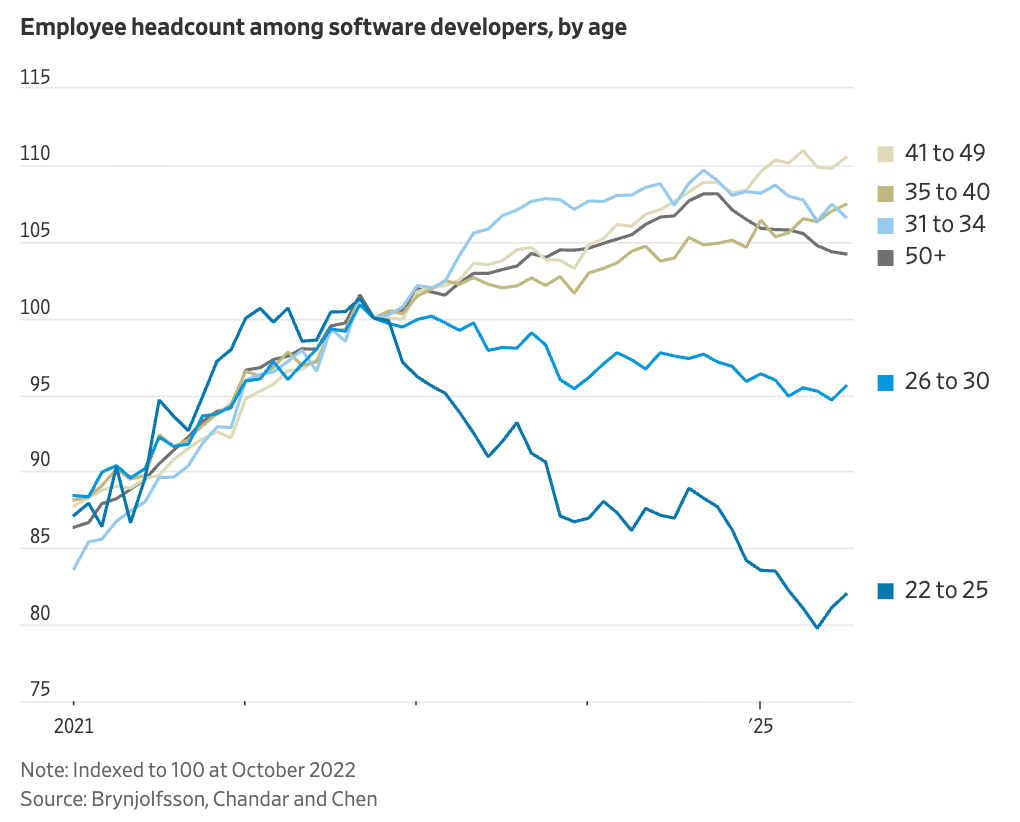20250921
“To scroll through Stick Figures in Peril is to enter a world where almost every conceivable aspect of everyday life is, well, perilous. Work? Perilous. Play? Perilous. Getting from Point A to Point B? Very, very perilous. And who is being confronted with all these hazards? A seemingly endless procession of hapless stick figures in various states of tripping, slipping, falling, drowning, dismemberment, electrocution, and more. Although depicted without faces, their emotional distress is almost always apparent, as if you can see their mouths agape, their eyebrows arched in alarm.” - Stick figures in peril.
People: the ozempic face. Selling family heirloom. Creating fake liens as a political act. Microschools. Dolls for elderly. Burnout?
World: and China urban planners. Quiet cracking. Africa want new maps. Fordite.
Tech: Cars decide if you’re too old to drive, or work with your insurer. Light pollution make birds days longer.
Space: deep space economy trends in China. ESA 2040 vision.
AI: destroying young people jobs? Impact on wages. GenZ into blue collar jobs, career minimalism for others. Six effects on recent employment (PDF).
Adoption doubled over the last 2 years.
“Chaque matin, je me réveille déchiré entre le désir de sauver le monde et l'envie de le savourer. Il est donc difficile de planifier la journée. Mais si nous oublions de savourer le monde, quelle raison avons-nous de le sauver ?D'une certaine manière, il faut d'abord savourer.” E.B. White

Fragmented Futures
Marcus had always believed that the world, with its bureaucracy and relentless grind, was as resilient as the enamel coatings that had once decorated automotive masterpieces in Detroit. It had humor too, in the way it misplayed its hand—there was nothing quite like the calamity of misfiled liens acting like paper thermonuclear devices against the unsuspecting public officials^1, much like a stick figure inadvertently tying a noose around its own neck while attempting to juggle flaming chainsaws.
As he stood in the lobby of his woefully underfunded community center, leafing through a box of inherited silverware—a wedding gift from a marriage he couldn’t remember—he wondered why he had decided to stick with this relic of a life that demanded care like a high-maintenance pet. It belonged more in a museum than in the hands of someone who had long since traded daily niceties for Zoom meetings and instant messaging^2. Sentimentality had never been a good business model, especially when the economic winds were shaped by algorithms and the ongoing “AIxiety” of Generation Z^3, which dictated safer career choices away from the corporate treadmill.
Marcus was also in the market for a new career, preferably one that didn’t involve explaining to an AI assistant why he hadn’t completed a task. He distinctly recalled one enthusiastic young lady telling him that AI was simply here to automate their jobs away like a merciless, unseen hand wielding a digital scythe. Struggling to stay relevant felt eerily similar to birds chirping away an hour early, completely oblivious to the light pollution blaring from their technically-enabled surroundings^4.
Inspiration struck him—you could skip the sentimentality, just like Fordite—colorful remnants of a past industrial age turned into jewelry, symbols of human creativity reborn from waste. ‘What if community engagement became our new Fordite? What if we took the debris of clashing interests—like those bureaucrat bashing liens—and remixed them into a collaborative art event?’^5.
This thought revitalized him, but he also knew that societal reliance had shifted, like those old maps distilling Africa to a mere footnote on the expanded Mercator projection^6. How could he get people to engage without the usual tiresome fights over resources? He'd need to channel the emotional connection younger generations craved while combating the loneliness epidemic plaguing those like Kim, the 81-year-old whose friendship with an AI eldercare robot crafted a semblance of normalcy in her life^7.
He decided to send out a Google form inviting contributions for an art installation, something that would allow participants to express their grievances amusingly—maybe even include a digital gallery of stick figures in various forms of peril to embody their struggles^8. “Come tell your tale,” he typed with a devilish grin while dreaming of a kaleidoscopic future, full of recycled voices in collaboration, layered like paint chips from long-gone factory floors.
And just like that, amidst the chipped china and ghost of past responsibilities, something miraculous began to simmer—a hope that perhaps art and community could shine brighter than the fluorescent screens trying to convince them they were merely pawns in a game of modern existence. The irony—in a world saturated with AI creating a rift in employment and laughter drowned under a sentimentality crisis—was that maybe, just maybe, it didn’t have to be that way after all.
---
^1 Who knew that reducing public officials to screen actors in tragicomedies could cost only $5?
^2 The legacy of care left behind was palpable—if only silverware could share their stories instead of collecting dust.
^3 After all, who needed an MBA when you had the “AIxiety Pivot” in your back pocket?
^4 Birds were now signing their own "before sunrise" contracts.
^5 Something valuable always emerged from the remnants of disorder—like pearls from the gunk of an oyster.
^6 Cartographies were as weighted as histories; you could feel their impact shifting perceptions of power.
^7 Interfacing with an AI wasn’t what one could call true companionship, but it filled a critical void, one beep at a time.
^8 Stick figures were the perfect metaphors of humanity's imperfections, falling and rising, laughing all the way.

